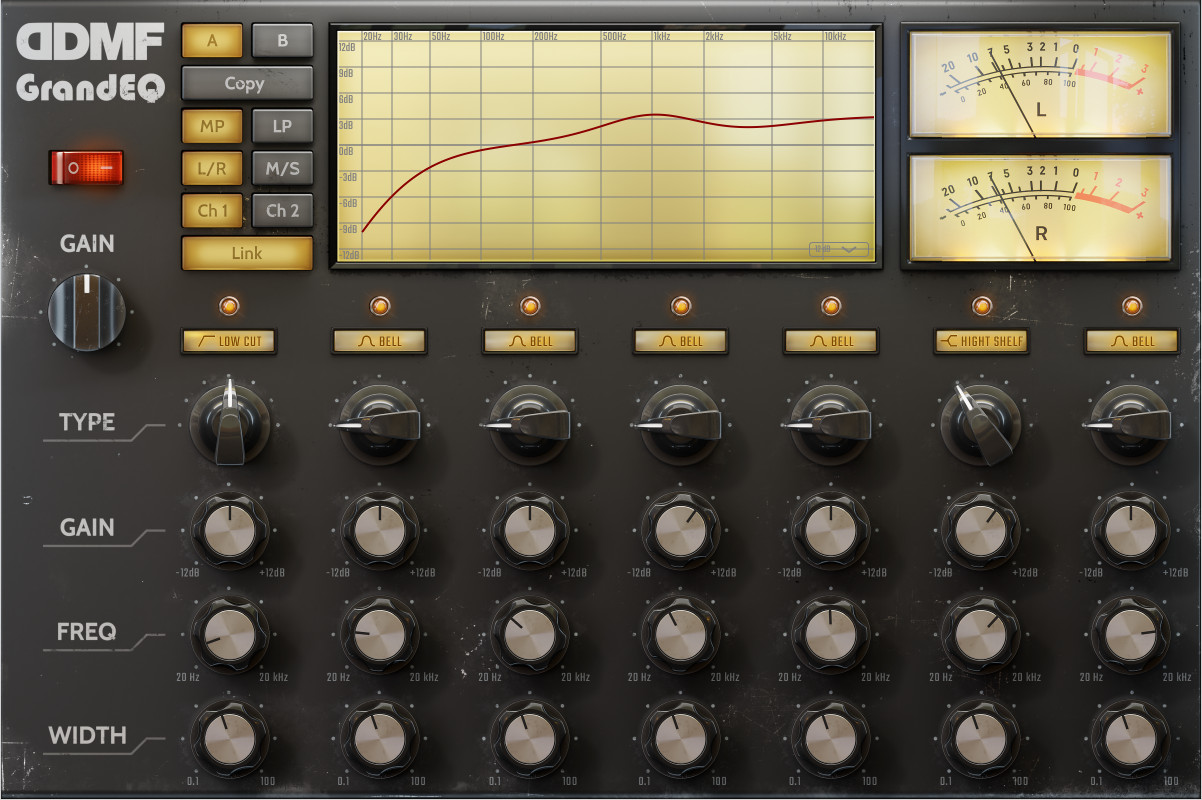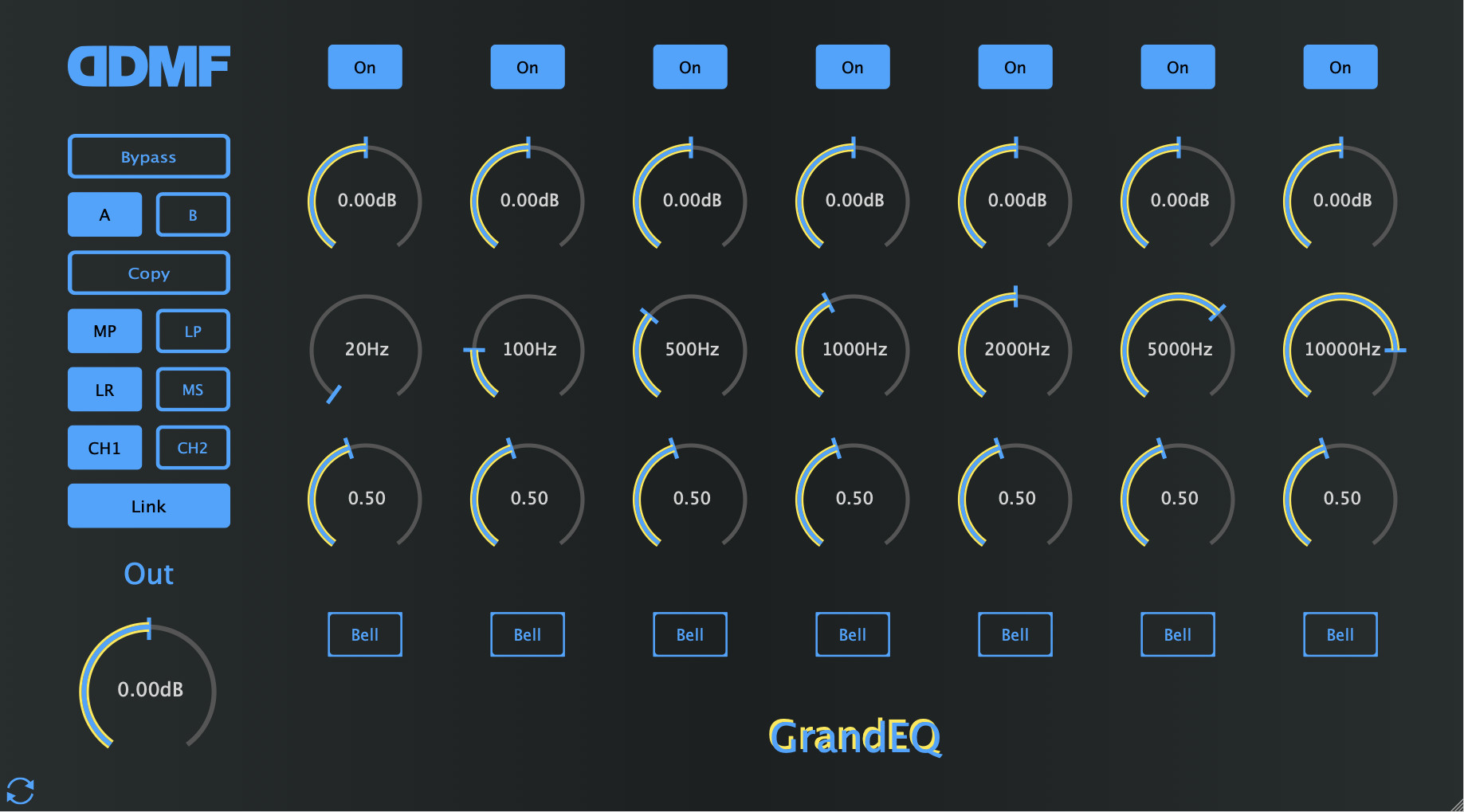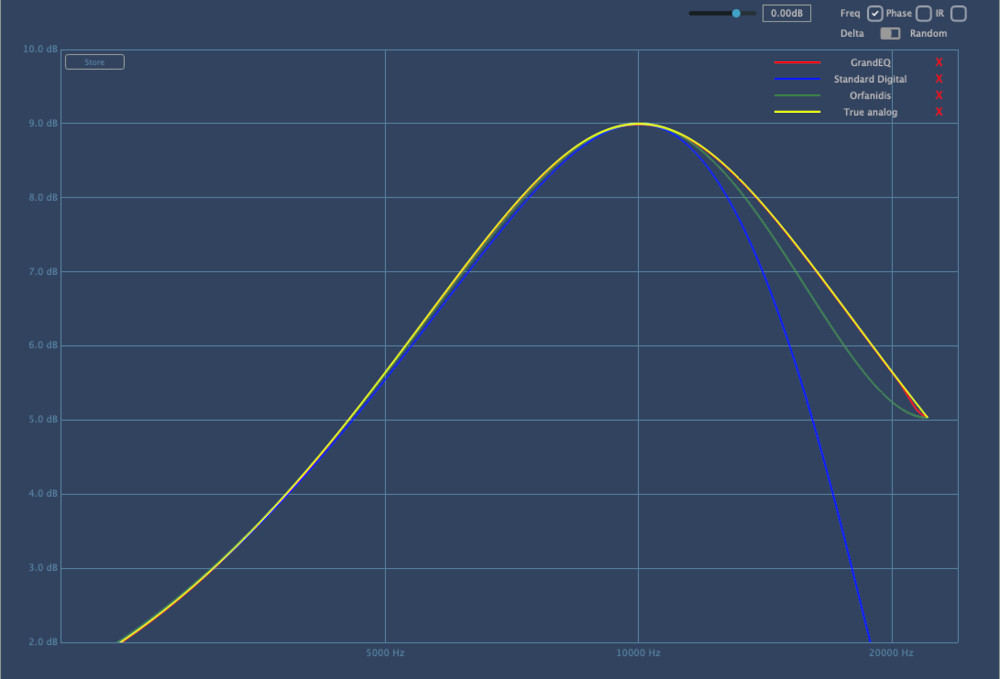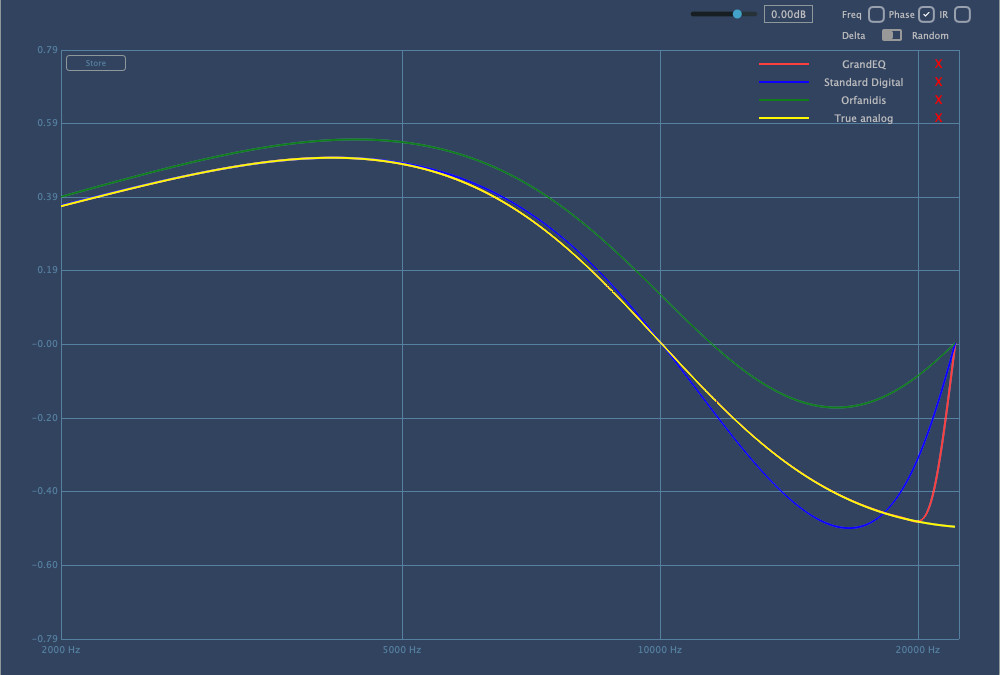What is it?
Of all DDMF equalizers, GrandEQ is definitely the one with the most sophisticated DSP algorithms under the hood. The goal in digital equalizer design is always to reduce the amount of digital artefacts which are introduced due to the necessarily finite sampling frequency. As with everything in life, the last few percents of optimization are the hardest, so a lot of effort has gone into creating an EQ which does the least possible damage to your audio material.
In its minimum phase setting, GrandEQ manages to do just that to an extent larger than most other EQs, and notably both in the amplitude and in the phase domain, while introducing only a very small amount of latency. The result is a very open and clear sound with, at the same time, excellent CPU efficiency. Its linear phase setting stays completely in the time domain, using an elaborate time-reversal algorithm and 2-fold oversampling to ensure excellent amplitude and (flat) phase response with the lowest possible amount of digital distortion.

Alternative UI
GrandEQ comes with two alternative UIs, the second one being a minimalistic approach that lets you focus even more on the sound alone, without any visual distractions. You can switch between the two UIs with a single mouse click, and your last choice will be remembered whenever you open GrandEQ again.

Matched magnitude and phase response: comparison
To further clarify what is meant by accurate magnitude and phase repsonse, let’s look at a Bell filter (+9 dB at 10 kHz). Looking at the magnitude response of GrandEQ (shown in red in the following image), note that it follows the true analog response (yellow) so close that it is barely visible below 20 kHz. Both a standard digital EQ (blue) and a decrampled digital EQ (green) show clear differences towards the higher frequency range.

This excellent behaviour also carries over to the phase domain: while all software EQs ultimately show a phase response of 0 at half the sampling (Nyquist) frequency, GrandEQ manages to follow the analog curve all the way until > 20 kHz, while the two other EQs clearly show a different response.

Features
- Minimum Phase algorithm: accurate magnitude and phase matching to analog targets
- Linear Phase algorithm: forward-backward approach + oversampling
- 7 independent bands, with 7 different band types: Bell, Low Shelf, High Shelf, Low Cut, High Cut, Bandpass and Notch
- two internal states (A/B) for quick switching between alternative settings
- Left-Right or Mid-Side operation
- Two-channel EQ which can be linked/unlinked
- Two different UI styles to choose from
Available in 32 and 64 bit format, as a VST, VST3, AU and AAX plugin. On Mac, OSX 10.7 or higher is required. Intel and Apple Silicon are both supported. The plugin will also soon be available for iOS as a plugin in AUv3 format, which you can directly use in compatible hosts like Garageband or Cubasis…